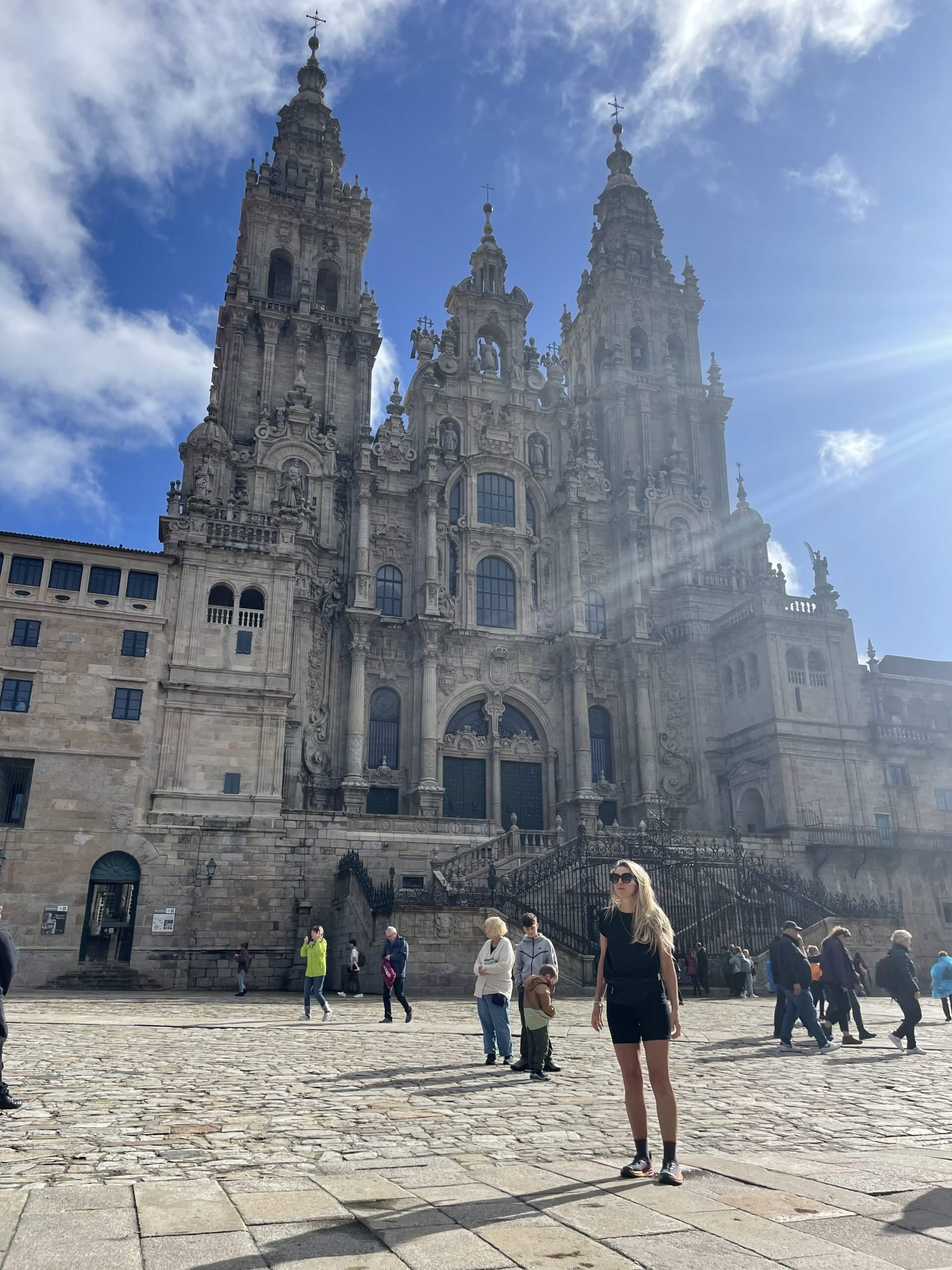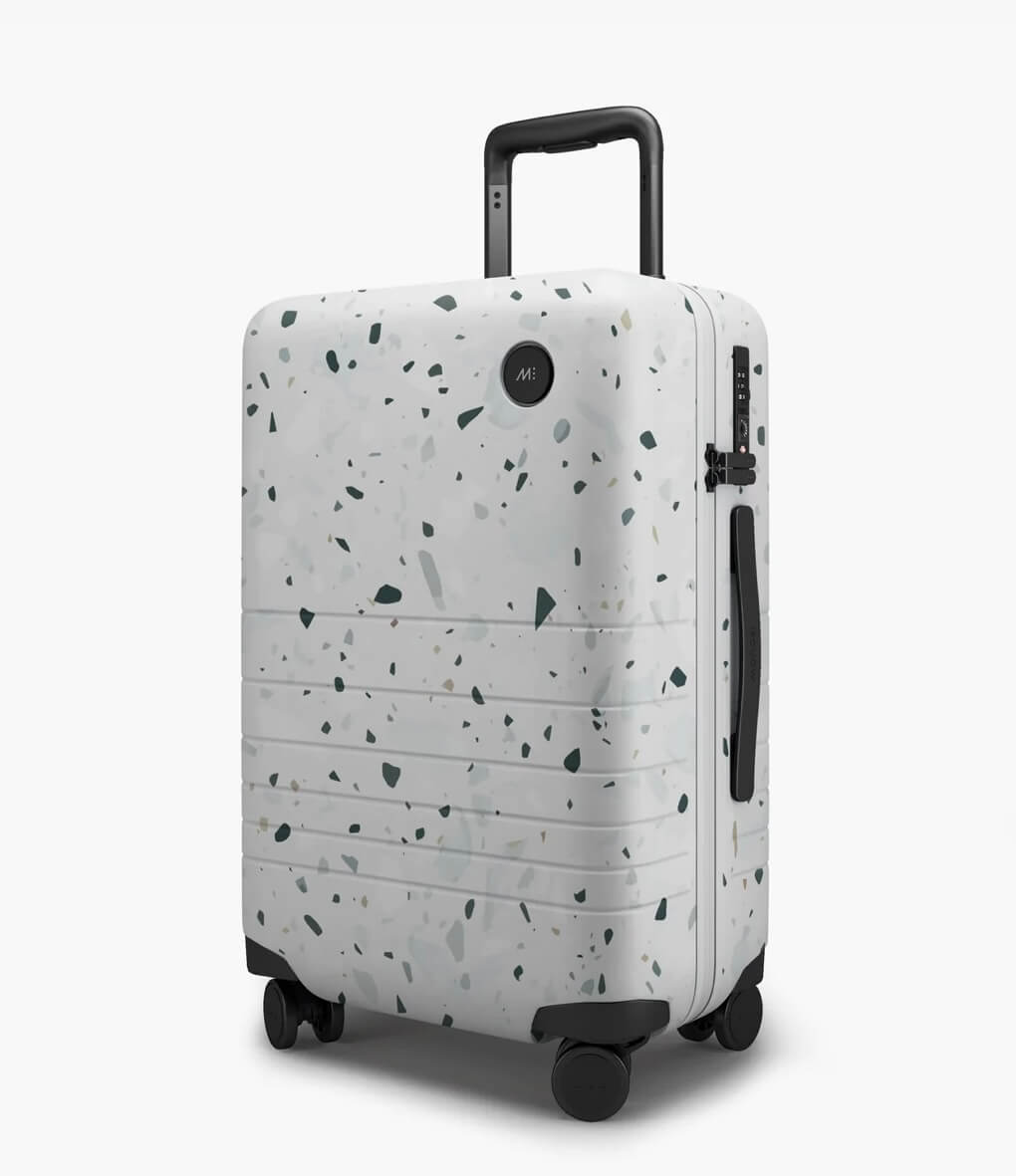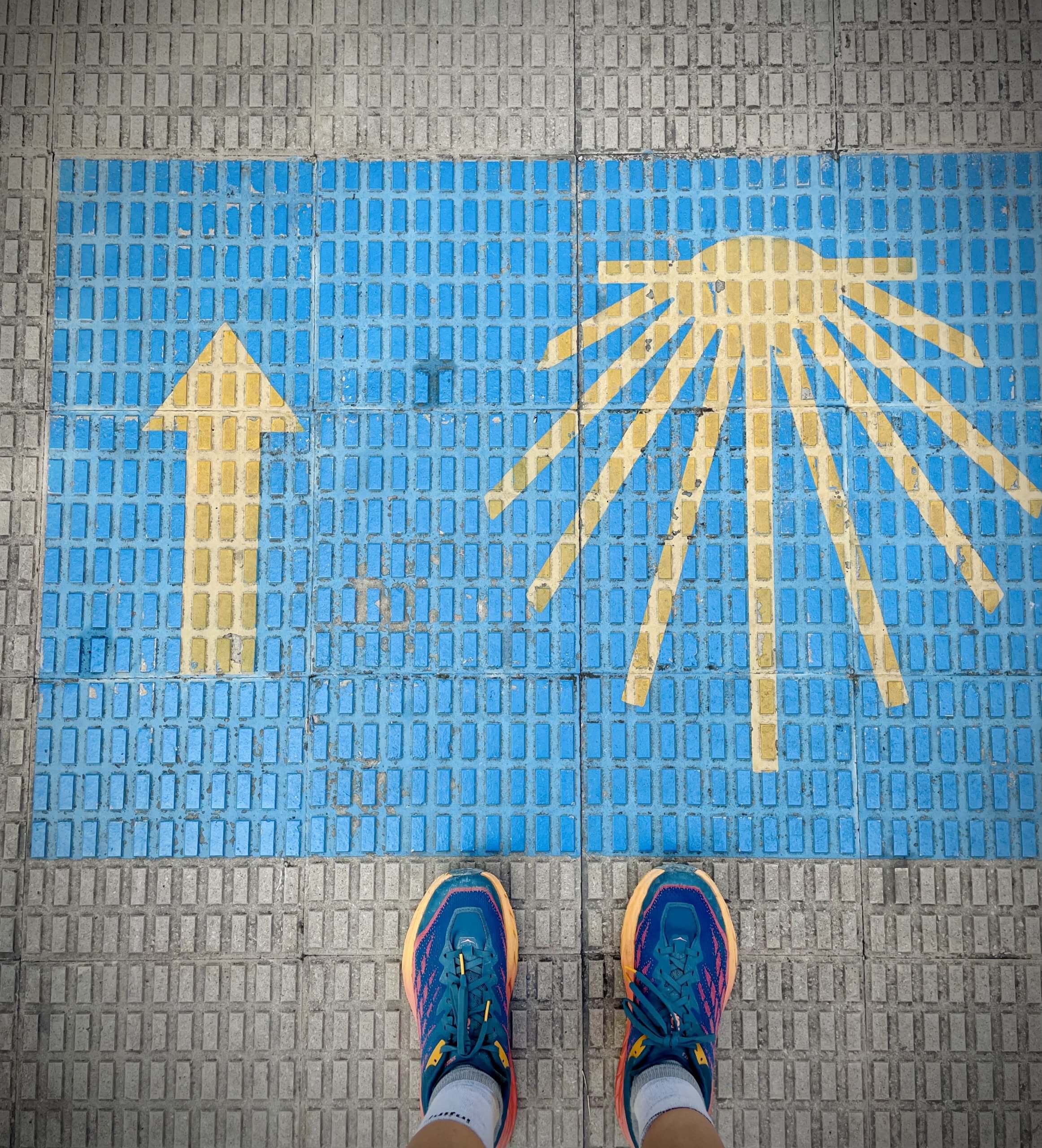
Top 6 Camino Lessons (Worth Taking Into Real Life)
I’m back, baby!
On November 5, after nearly two months abroad, I flew home to the States. This officially-officially marks the end of my Camino de Santiago and the beginning of the readjustment to “real life.”
Since I’m fresh off the Camino, it is still top of mind, and I’ve still got plenty to say about it. Today’s post is about Camino lessons—those little bits of wisdom learned along The Way. Bite sized bits to pack up and take with you into your real life. Or, at least, that’s the goal.
While I’m home, missing the Camino, adjusting to my old day-to-day, and trying to process what the experience meant to me, this is the perfect topic to cover. I smiled through the writing of this post. It made me feel closer to the Camino and reminded me of some important discoveries.
Today I’m sharing my Top 6 Camino Lessons—or, really, my top 6 life lessons learned on the Camino. I hope some resonate for you, whatever road you’re walking.
Camino Lessons
The Camino de Santiago is about walking, sure, but it is also about learning—about history, about god and religion, about the tiny towns and big cities in Spain you trek through, about the abundance of different experiences people carry, and about yourself. It is impossible to complete the Camino de Santiago without learning something along the way.
The most important things you learn, though, are not the historical facts about Northern Spain or a gothic cathedral. They are the lessons you find yourself learning in lightbulb moments of clarity, small doses of wisdom that transcend the Camino. They’re breadcrumbs sprinkled in that will complete the picture of your experience, make it feel meaningful.
If you’re looking to find a metaphor for life, the Camino de Santiago is one of the best I’ve found. And these “Camino Lessons” I’m about to go over translate accordingly. They are not lessons about the Camino, but rather lessons learned on the Camino about life. I collected these little bits of wisdom, these Camino lessons, along The Way. I tucked them in my pocket, and wrote them in my notes app, and discussed them with other pilgrims. Each of them was learned through a specific Camino experience, or several, and each of them is a thing I’d like to keep with me for the long haul. I’ve got six for the sharing, so let’s get into it.
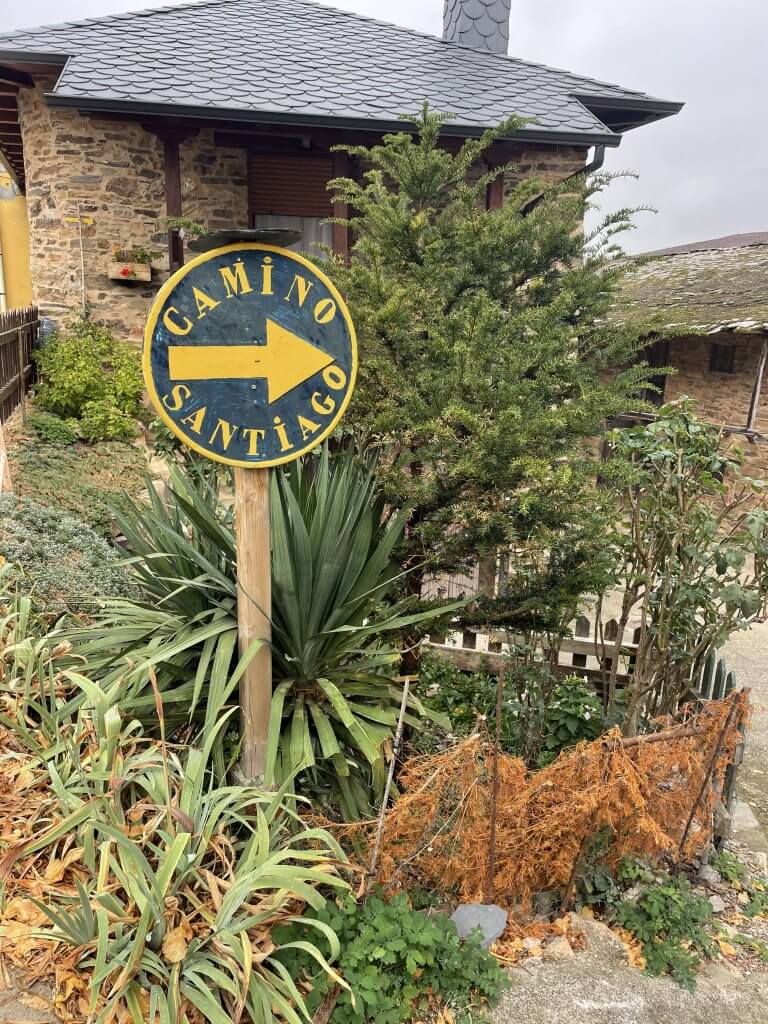
Top 6 Life Lessons Learned on the Camino
1. Accepting Gifts
A Gift Received is a Gift Given.
This may seem like fluff to some of you, but when your favorite story to tell about yourself is one of fierce independence and loner tendencies, it is not at all an easy thing to just accept a gift.
At Christmas, maybe, your birthday, perhaps. But even then, only from someone who should be giving a gift: A romantic partner, a family member, a best friend. From anyone else you might flush with discomfort, say it’s too much, opine that you “can’t accept.”
If you’re anything like me, you might be calculating a scorecard in your head and feeling indebted to a gift giver. And I hate being in debt. For some of us, accepting gifts in the form of things, money, help, or even compliments can feel like taking, like owing, or worse, like admitting defeat.
(If you’re new here and want to take a stroll into the rabbit hole of my independence issues, you can check out my 2020 post titled “The Girl Who Couldn’t: Self-Worth, Stories, and Toxic Independence”)
I had to learn quickly on the Camino to cram it and take what was offered. And now I’ll pass that Lesson on to you.
On the second morning of the Camino de Santiago, I woke up sore in Roncesvalles. My hips were feeling the 7-hour vertical trek from Saint Jean Pied-de-Port and through the Pyrenees the day before. I casually mentioned this to a bunkmate as I did a half-assed stretch and packed my things for my second day of walking.
“I have an 800 milligram Ibuprofen,” the basically stranger said.
“Oh no, it’s okay,” I started. She was older than me, surely she’d need them more eventually.
But she was already rummaging through her little bag of medications. She placed two pills in my hand—an extra for the next time I needed it—and instructed me to take them with a full meal. I only saw her one more time on the Camino, weeks later in Burgos, but I didn’t forget for a moment her kind gift.
A couple weeks into the Camino, on what would end up being a long, sundrenched day, I sat down in the shade of a covered café patio next to a woman I’d met from Minnesota. We chatted a bit—She’s an ER doctor, so naturally I asked about the weirdest things she’d ever found stuck inside people—while she finished her lunch salad and I ate an orange. We got onto the subject of chocolate and Lisa wished she had something sweet for the post-lunch pick-me-up we’d all become accustomed to by then. I unzipped the top pocket of my pack, pulled out my most prized possession, and handed it over. Half a chocolate bar with almonds. She tried to resist, and I insisted.
(Later, we would have another serendipitous chocolate exchange, after I located her missing shoe and she searched the Camino for days, carrying a “Thank you” bar of chocolate for me. A gift-off, if you will.)
It made me happy to have the thing that she wanted, to be able to so easily make someone’s afternoon, or at least moment. When one of my favorite Camino friends, Helmut, could barely walk in his shoes due to blisters, I gave him my Teva sandals to wear for the rest of the day. The gift of my sandals was not one of pity for his poor aching feet; The gift was as much for me as it was for him. It made me feel useful. I felt thrilled to have something in that heavy-ass backpack that came in handy for someone else—someone I care about, no less.
I’d always hated taking help or gifts or favors from other people. I saw it, self-centered per usual, as a reflection of myself: a lack of self-sufficiency, becoming a burden to someone, under obligation to repay. On the Camino, I learned to see gifts for what they really are: A two-way dance party of nice. The feeling of being able to help someone who needs it, or just to brighten someone’s moment, is at least as rewarding as receiving the thing, and sometimes more.
I took this lesson to heart and began living the word and spreading the gospel. I accepted when someone offered me a gift. In the month and a half on The Way, I was treated to ice cream bars and chocolate croissants and alcohol-free beers, fresh fruits and coffees and pasta dinners. I was given a button that read “Buen Camino” by an acquaintance and a rock to leave at the Cruz de Ferro by a dear friend. A tiny, delicate shell on a gold chain. Tips for how to treat my blisters and where to stay in town. Compliments that blew my mind. A phone number—in case I needed anything.
I gave as much and as freely as I could. A café con leche in Santo Domingo, a shirt better suited to someone else, my own honest compliments, my deepest affection, a meal here and there. I told new friends in a bar “This is your Camino lesson for today,” when they tried to pay me for the round of drinks I’d just gifted. I insisted on sharing my chocolate bars, not despite but because they were my favorite things in the world. Each time I gave it hammered this lesson home, allowed me to feel more comfortable receiving.
This lesson, of accepting gifts, is something I hope to take into real life. Being Miss Independent is cool and all, but it can sometimes get in the way of making real, honest connections.
The giver of a gift is also receiving. Loosen up, give in, let it happen.

This spread was a gift from some super generous locals outside of Astorga <3
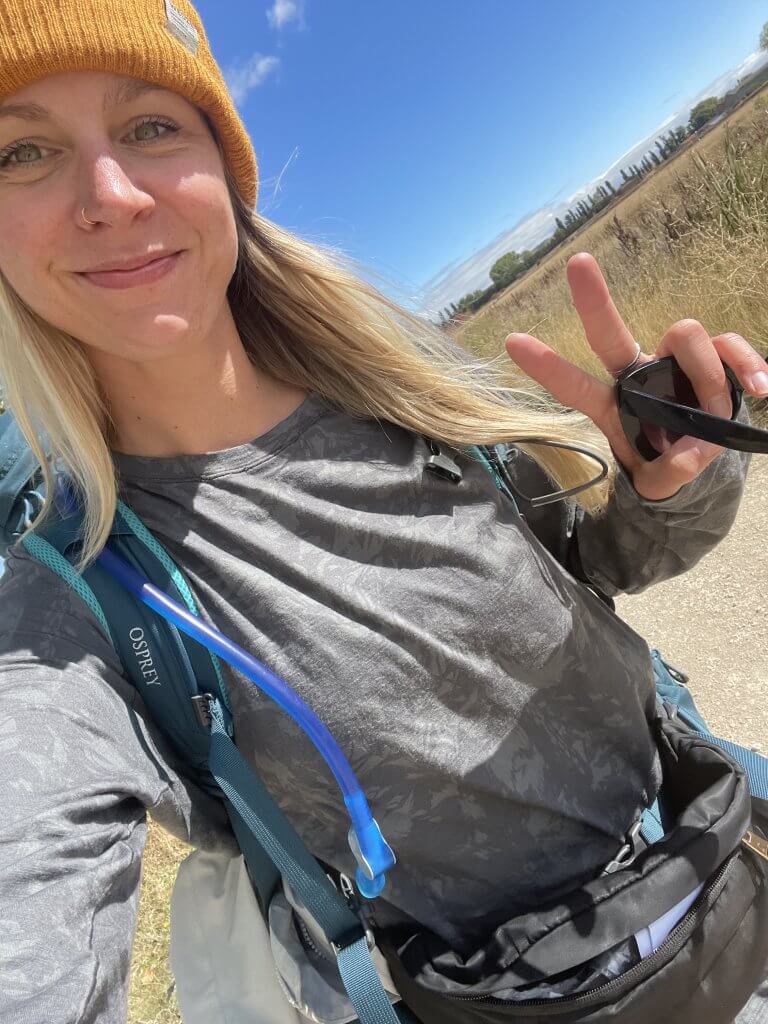
This shirt was a gift from a donation box at an albergue. And later I gave it away to someone else.
2. Don´t Assume the Worst Intentions
This lesson came to me while sitting at a bar in León Spain, one of my favorite cities along the Camino de Santiago.
Tapas are ubiquitous in parts of Spain. Order a drink and it appears alongside a bowl of potato chips, a plate of olives, bread with some kind of meat atop, or, in this case at the apparently Italian-themed café, a long, thin, slice of pizza. These little treats are given for free with the purchase of a drink. It’s nice for the patron to get free food and nice for the café when said patron stays for longer and orders more drinks.
One day in León, I sat outside a busy little cafe with my friends Ed and Gerry in the square by the Cathedral. We ordered three drinks—two beers for them, and an agua con gas (sparkling water) for me. When they arrived at the table, so too did two long skinny slices of what looked like delicious pizza.
You see the math problem here, yes?
Listen, I know buying seltzer is not the same as buying a beer in The States. But in Spain they are priced very similarly. It surprised my friends and I that my agua con gas would be snubbed so. Weren´t we all sitting together? Did I not, in fact, buy a drink? An outrage! Where was my pizza slice?
Ed offered me his slice of pizza, since he gets to eat all the meat tapas—a benefit to hanging out with vegetarians. I accepted the cheesy gift, and all was well. But we were still a bit salty about the whole affair. I won´t lie, we talked a little shit, may have rolled our eyes or something.
Ten minutes later, the same waitress walked over to our table with one skinny slice of pizza, placed it down, and walked away. We wondered if she´d heard our grumblings or felt the vibe. And then a lightbulb went off.
I turned to Ed: “Maybe those were the last two pieces ready.”
I could see his wheels turning.
“Maybe they had to cook another pizza.”
We agreed this was entirely likely—as likely, at least, as the snub of my soda water.
Why, we wondered aloud, would we have assumed that she just didn´t want to give me a slice?
“A Camino lesson!”, I exclaimed, and we both vowed to try to remember this one.
We have a choice in how we see things. In the things we assume and how we understand situations.
Do not assume the worst intentions.
We never really know what is going on behind the scenes. There are bad days, personal burdens we are all carrying. If a glimpse of this—a missing smile, a gruff tone, a harried expression—is present, consider it may have nothing whatsoever to do with you and everything to do with a heavy burden being carried.
There are forces outside of our control that have little to do with any intention at all. Like the pizza oven in a busy café.
Our thoughts are choices. Let´s make the most of them.
For all we know, something tasty and wonderful is coming right up.
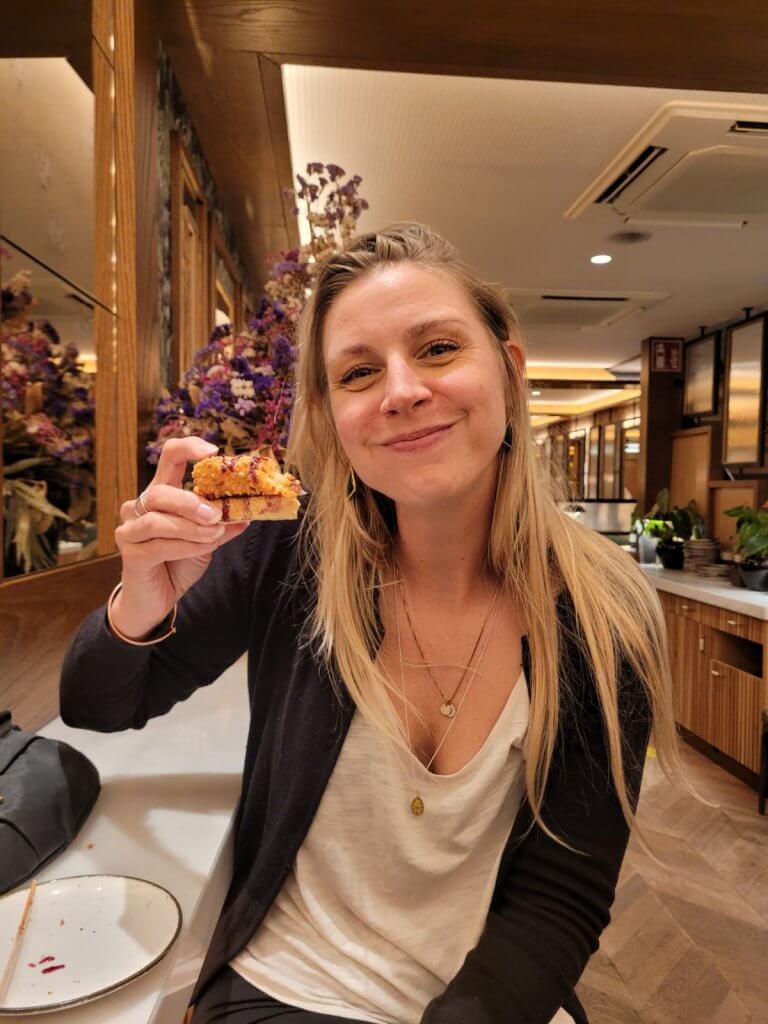
Just having a snack while assuming the best about people.
3. Letting Go
Letting go is one of the Camino lessons that every person will learn in one way or another. In fact, the next three lessons of this post could all be categorized as “Let It Go” if I wanted to be a bit more vague. Whether letting go of heavy items—burdens weighing down our pack, letting go of resentments we brought, or letting go of the need to have every detail mapped out, we are learning to do this daily on the Camino de Santiago.
We also learn to let go of people, a lesson that is harder for some to learn than others. But the Camino will force it upon you.
On the Camino de Santiago, we are all walking the same way. A line of pilgrims from Saint Jean or somewhere else in the East, and all the way West to Santiago de Compostela. You stay in the same towns and eat the same pilgrim meals and sleep in bunkbeds next to one another. Conversations happen, and often they plunge quickly into the deep. Run-ins happen day after day, in cafés and bars and standing in line for the shower. Relationships form.
There are people you’ll like, with whom you’ll share a profound conversation. People you’ll feel you were meant to meet—too many delightful coincidences in one conversation for it to be just that. You check into the same Albergue. You sit at the dinner table and continue your conversation. You may wake up and set off for the day together, in the dark, gravel crunching underfoot, conversation still flowing.
But at some point, one of you needs coffee and the other does not. One of you fancies an hour break in a beautiful shady spot and the other is anxious to get to the destination, and the hot shower waiting. One of you powers through hills, pushing, pushing until the top, afraid to slow for fear of being unable to start up again. The other takes a slower, steadier pace with breaks every so often.
We are all going the same way, but we are not doing it in the same way.
When we try to force it, to make our Camino stay in tandem with someone else’s, we miss out on things that are important to us. A rest day in León you skipped to keep up with friends, a restaurant you wanted to try but didn’t, opting instead for the group’s choice, the last 10k of a long day your body ached to continue, the challenge you felt up to cut short for someone else’s pace. Compromise is fine, but at the end of the day it is important to make sure you’re still walking your own path.
On the Camino, it is inevitable: You will lose people you enjoy immensely. You will have interactions that feel divine and then never see the person again. You will want to keep in touch, but timing and The Way will get in the way.
And here´s the thing: It’s okay.
Not every person you encounter is meant to be standing with you at the end. Just like in life, people come and go, and each relationship will touch us in a different way. Some last a section—Burgos to León, all of your mid-twenties. Some last a spell—a difficult incline, a night in a tiny town like Villambistia, Spain, a summer fling. And a small number of people will make it to the same place at the same time as you in the end. Treasure these special few but know that not everyone can be in this category.
For all the others, treasure them, too. Treasure the moments you have, the deep conversations, the right-place-at-the-right-time-ness of it, the beautiful story, the lessons learned. Take it all in, give freely, enjoy the fuck out of your time with people. But love lightly, with a loose grip. And when the time comes, let go.
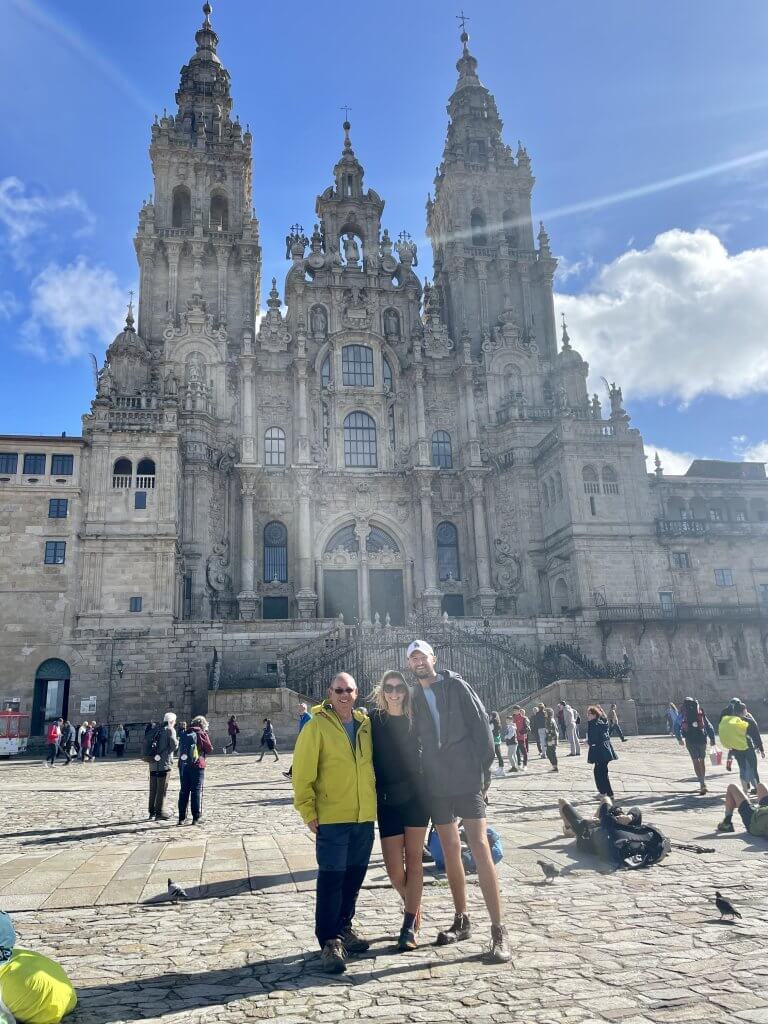
So glad to have been standing with these people at the end.
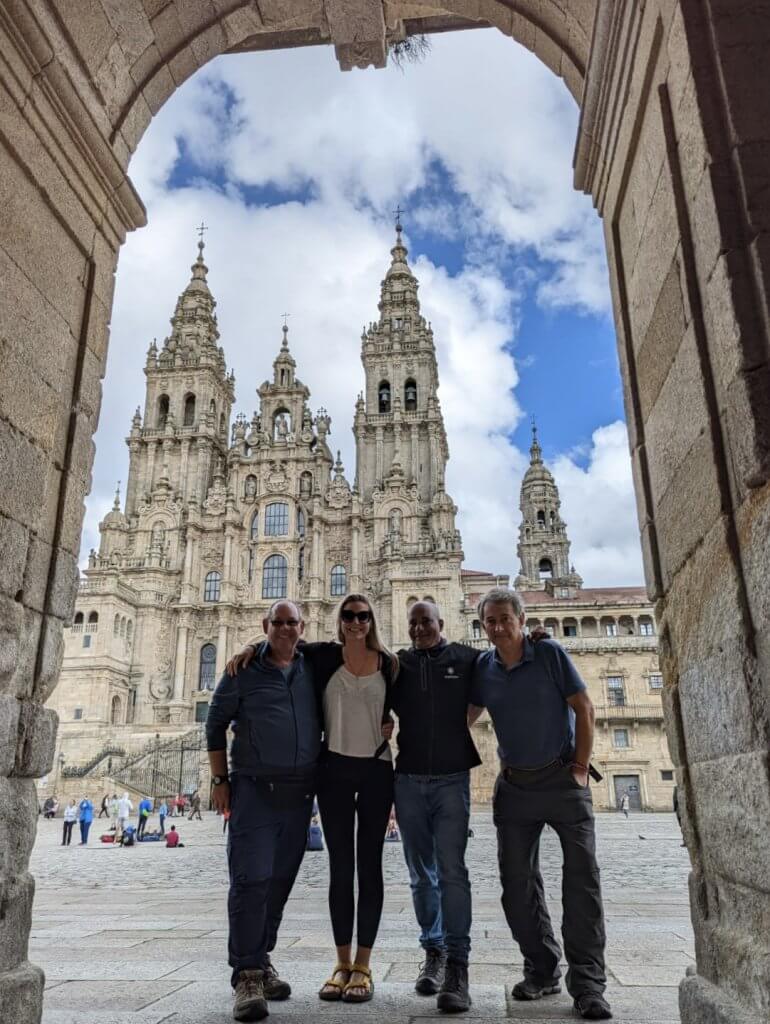
4. You Are Allowed to Change Your Plans
One of the things I had to learn to let go of on the Camino was the plan I had concocted in my head of how my Camino would go. I mentioned this Camino Lesson in my last post, The End(?) of the Camino de Santiago, because that’s when it came into play. But I’m going more in depth here, since we’re here.
In preparing for the Camino de Santiago, I tried not to have too many expectations. I did, however, *think* I had an idea of how it would go. I pictured long, lonely walks through varying landscapes. I pictured stopping to write by a babbling brook, maybe doing some morning yoga on a patch of grass during a break. I imagined all the profound thoughts that would “just come to me” while walking, all the writing I would do in the evenings. I thought I’d reach some meaningful conclusions and enjoy the solitude of a month spent mostly alone.
LOL.
The first week or so of my Camino looked like a pale version of this. I never once did yoga by a babbling brook, nor did I write during the day, too concerned to get to my albergue before the beds were gone. But I did walk alone for much of the beginning. A conversation here or there, then back to myself. (Great company, I might add.) In the first week of the Camino, I wrote daily in my notes app and listened to two audiobooks. I talked to the trees, shook hands with the flowers and cattails as I walked by, sniffed the air, ate the grapes, tried really hard to take it all in.
But by the time I reached Burgos, everything had changed. I connected with people. I made what felt like real friends. I ended up walking with people for hours at a time. Making plans with them in the evenings. Rushing past my writing time to hang out with them. It felt like a conflict sometimes—like I was betraying the goals I’d set for myself. (Don’t worry, I have a therapist for this.) But at the end of the day, I decided to give in, deviate from the plan, and allow the experience to change.
Throughout the Camino when people asked what I planned to do after Santiago, I kept saying the same thing: “I’ll walk to Finisterre and Muxia. Then I’ll probably go to Madrid and fly home from there.”
Finisterre and Muxia are two coastal cities on the westernmost tip of Northern Spain. It is a popular thing to do to extend the Camino past Santiago and to the coast. In fact, these two places are where you find the 0,0 km markers indicating the end. Being in good health, relatively fit despite eating chocolate several times a day, and living for a challenge, I of course believed I’d walk to both.
Those of you who read the last post know the story, but if you haven’t it goes a little something like this: The rains came, and my plans changed.
Not only did it feel miserable to walk in the squishing, sopping rain, but the romantic partner I found along the way (decidedly NOT a part of the plan) was sick. So, we took the bus to Finisterre. In a double-whammy of plan-change, I gave up on the challenge of walking on from Santiago AND the need to “Go my own way,” opting instead to let a partner influence my actions. And you know what? I didn’t regret it. Not even once.
I can’t lie and say I didn’t feel a bit like a cheater, but getting over that feeling was an important part of this Camino lesson for me.
You are allowed to change your plans. In fact, I believe each of us should be continually reassessing to see whether those “plans” still serve us. When they don’t, we need to let go of them just like we let go of faded relationships and overweight baggage.
I did go to Finisterre and Muxia, and I did go to Madrid, but not in the way I expected. After Muxia and before Madrid, I found myself in Barcelona, wrapped up in someone else’s plans. And instead of exploring the capital city alone, when I did get to Madrid, it was arm-in-arm with someone I cared about. I extended my trip further and took three days in London, a complete off-roading of my original plans, and had a blast there despite the rain and gray.
The whole end of my Camino was marked by this lesson. Each move I made in the last two weeks of my trip was different than I’d expected and diverged from the plans I’d laid out for myself. It was beautiful—both the flow I was going with and the allowing myself to do it. I want to keep this lesson close, to recall it when I feel a tug inside to change course or when I feel anxious—or guilty—about not “Sticking to the plan.”
Maybe plans work best when they’re used as outlines, guidelines, and ideas, rather than strict steps in sequence. Consider this a permission slip: We are all allowed to change our plans. When push comes to shove, let the plan go and do what makes you happiest.

How I sleep knowing I've turned all my best laid plans upside down in order to have a good time.

Didn't regret taking the bus
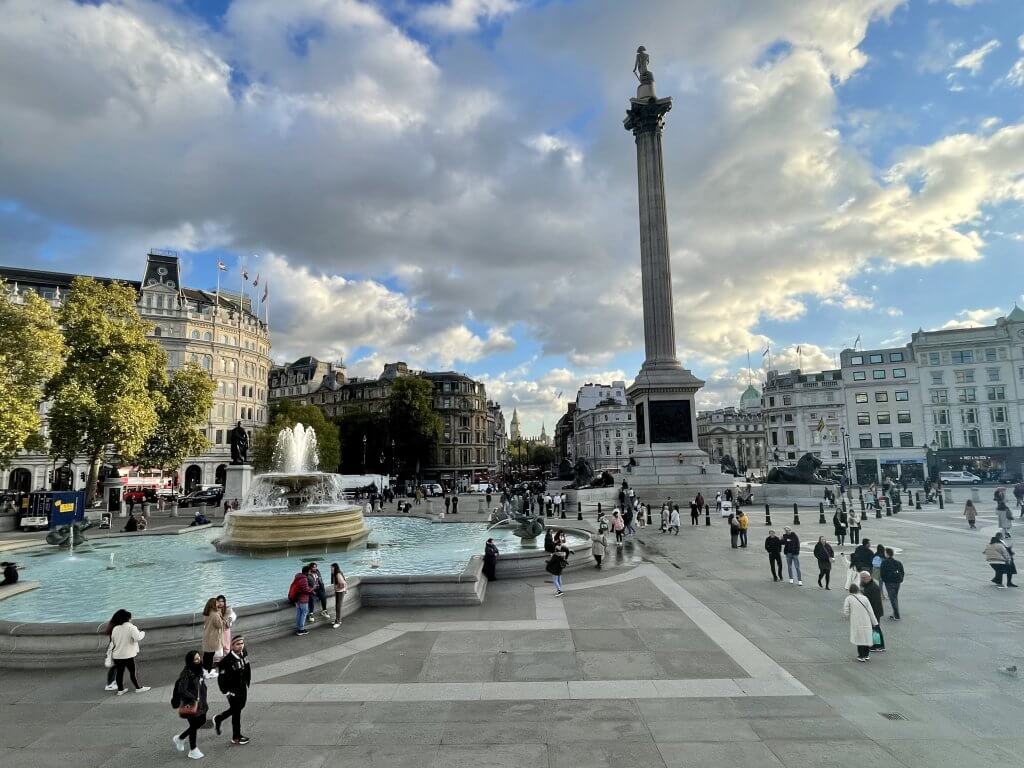
Or the trip to London.
5. Look up, watch for the signs, and follow in faith
This Camino lesson was learned on my way out of Burgos, but really it was just a good reminder of something I already try to embody in my life.
There are several mobile apps that can be used for the Camino de Santiago. (So much for being unplugged, right?) I wasn’t sure if I wanted to use an app, but I ended up downloading one called Camino Ninja that was recommended to me. Now I’m a total convert—the app is awesome. Two features in particular make it incredibly useful on the Camino. The first is the information about accommodation. Organized by village or city, it includes prices, ratings, a link or phone number to book, and property amenities like washer/dryer or community kitchen. The second super useful tool, one that saved me a few times, is the map. The map feature shows the Camino as a red line and your real-time location as an arrow.
There are yellow arrows painted all along the Camino de Santiago that lead the way. They’re on buildings, on signposts, on the ground. And ostensibly, this is the whole point: To follow the signs. But there are many times along the nearly 500 miles that you will feel unsure about which way to go—a fork in the road, a busy 5-way intersection, a pitch-black 7am start to your day. The app is a godsend in these moments, saving you from getting miles and hours off-track, or giving you peace of mind that you’re headed the right way.
The day I left Burgos was a late start. There were few if any other pilgrims around because I didn’t leave the luxury of my private room until about noon. Didn’t matter to me; I popped in my headphones, turned on some music, and opened my Camino Ninja map to show me the way. It was all fine and well for a time. Until my two guides—the painted yellow arrows and my vital Camino app—disagreed.
The arrows pointed one way, not at all in the direction of where the app was sending me. I had a decision to make. Great.
This may sound like an easy one—”Follow the arrow,” you’ll say. That’s the whole point, afterall. But the app had never steered me wrong before. In fact, it had saved me from getting lost several times. When the arrows fell short it, were too far apart, the app had made up the difference, reassured me. Why should I stop trusting it now?
I hemmed and hawed, went back and forth, considered my two options carefully. Though it looked like the arrows were going way off track, according to my map, I ultimately decided I had to follow them. I was here to follow The Way, not to look at my phone.
One of the Camino de Santiago’s great metaphors is the yellow arrow. In life, just like on the Camino, we are given signs, opportunities, small moments to seize, a next right step. What we are never given is a road map. We don’t get a preview of steps 8-20 on the path. We can only see the one before us, this singular decision. We can hope for a certain ending but can never truly know it will happen—and we certainly cannot predict what the journey on the way will look like.
This Camino Lesson harkens to one my mom has been spouting for as long as I can remember:
“Just take the next right step.”
I began following the yellow Camino arrows out of Burgos, unconvinced of their merit, but leaving it up to the universe. It felt like a roundabout way, but eventually I spotted another pilgrim. I was on track. Not only that, but the route was beautiful. The arrows brought me to a city park with wide walking paths, and fountains, and giant old trees lining the sides. It was a perfect day for a walk in the park, warm and sunny, but not too hot. Some leaves had fallen giving the scene a crisp autumn twist, and I reveled in my surroundings. Families pushed strollers, couples held hands, a man threw a stick into a fountain, and his eager Labrador jumped in to retrieve it.
I walked through the park feeling it was my reward. For getting off my phone and looking to the world before me for answers. For taking the next right step, despite not knowing where the path would lead. For following in faith that it would all turn out alright.
We get a sign, an opportunity, a step one. And it is up to us to take it and to follow in faith. Risks are hard, uncertainty can be chilling. But having faith—in ourselves, our abilities, or that everything will work out in the end—can help us get through to the sweet reward on the other side.
Those of you who know me will know I’m not at all religious. That being said, I believe in things I cannot see: Divine coincidence, something much bigger than myself, and gut feelings. If this Camino Lesson hits you more on the religious spectrum, then I think that is right where it is supposed to land. <3

The signs are there, keep your eyes open.
6. And, controversially, Look Back
The Cruz de Ferro, or iron cross, is an iconic stop on the Camino Francés. It is traditional for pilgrims passing by to leave a stone from home at the base of the cross. I was instructed by a friend to imbue into a stone all the things I wanted to let go of, and then to stand with my back to the cross, toss it over my shoulder and—importantly—never look back.
The symbolism is nice, the letting go part. The rest I’m not so sure about.
Much is made of this “never look back” business, but I have a bit of a beef with it.
I understand the notion of looking, aiming toward where you want to go; We steer where we stare, right? But I think understanding where we have come from is equally important, especially when we are on a mission of progress.
I saw a sunrise nearly every morning of my 35-day Camino. This was special for me because in real life I’m the type of person who loves to see a sunrise but hates to get out of bed early enough to see it. On the Camino de Santiago, I set out before dawn most mornings, began my walk in the cool dark with my iPhone flashlight to guide me. Thirty minutes later, I was greeted by the first pale blue stretches of sky, the shift from night to morning. The pinks and purples and then brilliant gold followed as the sun’s rays overtook the land, rose in quiet greeting.
But the thing was, we were walking East to West—away from the sunrise. I was fortunate enough to be on this journey, in gorgeous settings, and just at the perfect time to witness one of nature’s daily doses of magic, but I would have missed it all if I focused my gaze forward.
It is important sometimes to stop, turn around, and witness the beauty behind you. And I assure you, there is beauty behind you. Woven through our past mistakes, the things we’d change if we could, are threads of beauty. The time and distance between then and now can allow for understanding, empathy. Maybe you were doing the best you could. Maybe you weren’t, and instead you can see sparkling beauty in the progress made.
We cannot run from our past, nor our mistakes. Sometimes refusing to look at things makes them bigger, worse, and more powerful than they need to be. I want for you and me and all of us to be able to focus on what we want and where we are going, to not be dragged down by the weight of the past. But I also hope we can take a pause once in a while, to look back and see the truth and beauty behind us; Let it be a comforting shift in perspective or a reminder of how far we’ve come.
I turned around every single morning to witness the glory of a Camino sunrise in Spain, and I looked down from every peak climbed to see the distance, the work, and how far I’d walked. I plan to continue this practice, and I hope you will too.
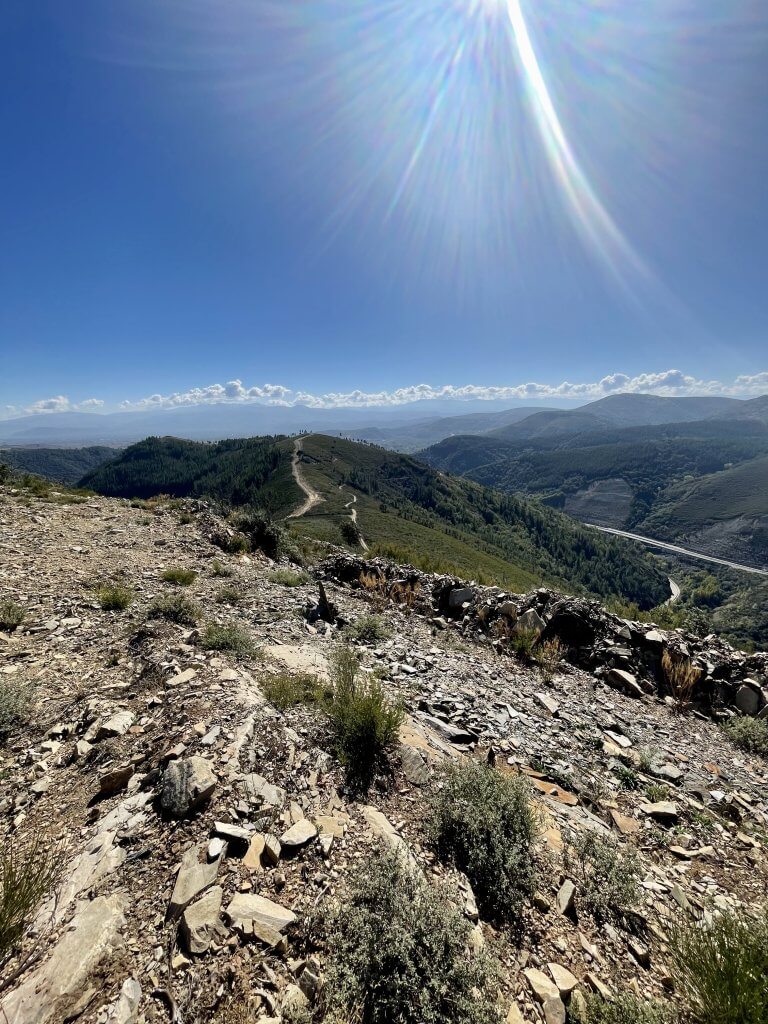
Watch for the progress,
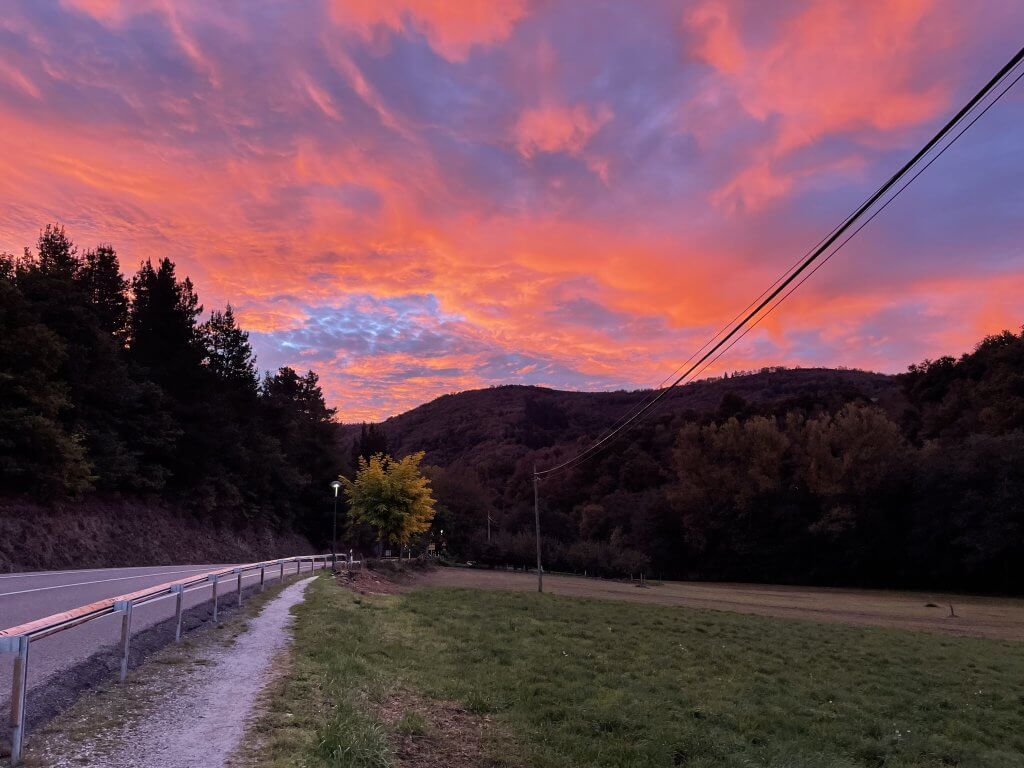
and the beauty behind you.
And there you have it, folx, my Top 6 Camino Lessons learned along The Way. I hope that some of these resonate for you, cause man they really hit home for me. I also hope to be able to incorporate them into my day-to-day life, to keep some of that “Camino spirit” alive. In the meantime, it was a fun trip down memory lane—all 500 miles of it.
Wishing you all the best weekend, and a happy upcoming holiday season.
Until next time…

Hey you! Yes, you.
Thanks for stopping by. I’m Toni and I run the show here at A Wheel in the Sky. Here we talk all things travel, flight attendant life, and excessively personal anecdotes. I hope you liked this post about Camino Lessons. If you’re interested in reading more about the Camino de Santiago, check out some of the posts linked below. I’ll also link some good starter content for those of you who are new and want to have a look around.
If you want to stay up to date with travel tips and juicy flight attendant stories, please consider subscribing to get all the latest delivered right to your inbox. Lastly, if you like what I’m doing here and want to, you can now buy me a coffee at buymeacoffee.com/awheelinthesky. A caffeinated gift is never expected and always appreciated!
Thanks again for coming <3
Camino Content
The End(?) of The Camino de Santiago
Camino Week 4: The Love Bubble
Camino Reflections: Time, Connection, & Being Human
Big Trip Announcement: Camino De Santiago 2022
Flight Attendant Life
Pay Me for Boarding: Why Flight Attendants Must Fight For Fair Pay
7 Things I Wish I Knew Before Becoming a Flight Attendant
The DOs and DON’Ts of Dating a Flight Attendant
Helpful Travel Tips
6 Flight Attendant Hacks That Will Solve All Your (Travel) Problems
So, You’re Scared to Fly? Top 7 Tips to Beat Your Fear of Flying.
How to Poop on a Plane: A Flight Attendant Shares
& The More…Personal
Imposter Syndrome Strikes Again: What, Why, & How to Fight It
Naked & Alive: Stepping Out Of My Comfort Zone At Black’s Beach
2 Year Sober-versary & The Shit People Don’t Tell You About Quitting Alcohol

